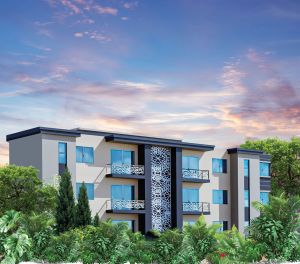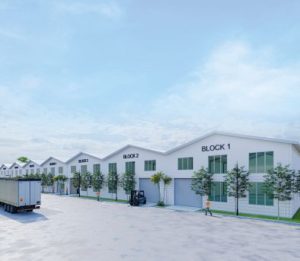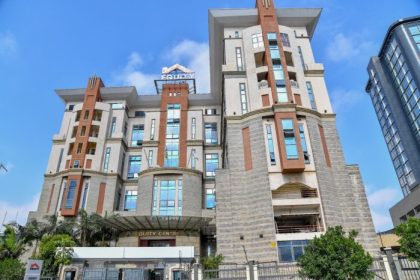Kampala property market softens in prime segments, gains in retail and industrial

Uganda’s real estate market showed mixed signals in the first half of 2025, with retail and industrial segments posting gains while prime residential and office sectors saw further softening, according to Knight Frank’s H1 2025 Kampala Property Market Review.
The trends unfolded against a backdrop of steady macroeconomic performance. Uganda’s economy expanded by 6.3pc in fiscal 2024/25, driven by strong services sector growth and improved trade. Headline inflation edged up to 3.9pc in June, while the shilling strengthened by 3.8pc year-on-year on steady forex inflows. The central bank maintained the policy rate at 9.75pc.
In the prime residential segment, occupancy rates dipped by one percentage point to 80pc, and average rents for two-bedroom units fell by 7pc. Knight Frank attributes the decline to new supply coming onstream at a time of shifting tenant profiles — with reduced demand from Western expatriates partly offset by increased leasing from Asian professionals.
Secondary suburbs bucked the trend, recording both higher occupancy and growth in short-stay listings, a reflection of affordability constraints and changing lifestyle choices.
Office Space Under Pressure
The office sector continued to face demand headwinds. Occupancy for Grade A offices dropped by 5pc, while Grade AB slipped by 2pc, as completions outpaced uptake. Leasing activity was driven mainly by smaller space requirements from consulting, ICT, and professional services firms.
A shift away from the traditional CBD towards suburban office hubs was noted, with growing interest in condominium-style offices that offer ownership flexibility.
Retail Footfall and Sales Climb
Retail was one of the brighter spots. Shopper footfall rose 13%, grocery turnover grew 8pc year-on-year, and occupancy rates in Knight Frank-managed malls improved by 2pc. The sector benefitted from the entry of new international brands, increased mall activations, and better road access. Rental rates remained stable despite the uptick in traffic.
Industrial Sector Remains Resilient
 Industrial property maintained its status as the most resilient asset class, with occupancy above 80pc and rents holding steady between $3 and $7 per square metre per month. Demand was led by agro-processing, FMCG, and manufacturing firms.
Industrial property maintained its status as the most resilient asset class, with occupancy above 80pc and rents holding steady between $3 and $7 per square metre per month. Demand was led by agro-processing, FMCG, and manufacturing firms.
New warehouse projects emerged in Nalukolongo and Namanve, supported by policy and infrastructure tailwinds — notably tax incentives for local SMEs under the Uganda Tax Amendment Act 2025, and progress on the Standard Gauge Railway.
Cautious Outlook Ahead of 2026 Elections
Looking ahead, Knight Frank sees cautious optimism in the second half of 2025, noting that performance will hinge on market adaptability, infrastructure delivery, and responsiveness to evolving tenant expectations.
With Uganda’s general elections set for early 2026, the property market will likely balance expansion opportunities against potential political and economic uncertainties.


 Equity Group posts record 2025 H1 profit as four-year transformation drive bears fruit
Equity Group posts record 2025 H1 profit as four-year transformation drive bears fruit
 Nile Breweries, WWF complete restoration of key River Rwizi catchment in Kibaale
Nile Breweries, WWF complete restoration of key River Rwizi catchment in Kibaale
 Equity Bank pitches financial services to Ugandans in South Africa
Equity Bank pitches financial services to Ugandans in South Africa
 Airlink to add 10 Embraer E195-E2 jets in deal with U.S. lessor Azorra
Airlink to add 10 Embraer E195-E2 jets in deal with U.S. lessor Azorra
 COMESA consumer watchdog warns Ugandan motorists over recalled Ford 4X4s
COMESA consumer watchdog warns Ugandan motorists over recalled Ford 4X4s
 How a bank’s belief helped Falkan Investments thrive in Uganda’s tough SME terrain
How a bank’s belief helped Falkan Investments thrive in Uganda’s tough SME terrain
